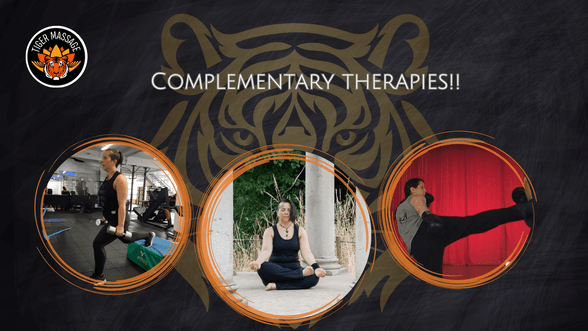Complementary Therapies; how balancing intensity with mindfulness is an integral part of prolonging your active lifestyle.
For many of us who train or engage in some sort of regular physical activity the positive effects, aside from the obvious physical benefits, could be termed as 'Complementary Therapy'. We all know that exercise releases endorphins, and that makes us feel good, but what about the benefits to your musculoskeletal structure of a well rounded physical activity routine that encompasses intensity & mindfulness?
A lover of Kick Boxing and weight training myself, a recent return to the activity that compliments both of those high intensity training regimes (yoga) has reminded me of not only where I started, but also the fact that I have, to some extent, neglected my body. In my tunnel vision of wanting to lift heavy I left behind a key activity that would not only have complemented my strength training but would also have kept my musculoskeletal structure & my posture in far better condition than it is now; open, supple, with full range in the joints, & well balanced.
So how did this happen?
Firstly I need to understand my posture type, once I have understood that then I know which muscle groups of my body are naturally getting more work and therefore are strong; and which muscle groups I might rely on a little less and therefore may well be less efficient and struggling under the demand of load. Resulting in exacerbating a particular posture type. This eventually puts too much stress on a limited group of muscles instead of utilising efficiently all the muscle groups available.
Understanding Posture…
At this point it is really important to differentiate between the posture we might adopt at our desks in front of computers, or whilst looking down at our mobile phones, and the posture type that refers to our structure, the one that influences our body mechanics, how we stand naturally, or determines which muscle groups fire up more efficiently than others, or how our muscles develop for instance.
The basic postures are understood as:
• Lordotic/Lordosis; characterised by an anterior pelvic tilt, that means your hip structure tilts forward.
• Kyphotic/Kyphosis; is characterised by an excessive curve in the upper thoracic region of the spine
• Sway Back; characterised by pushing the hips forward. The hips could tilt in either a posterior or anterior position.
• Flat back; where there is no definition of curvature in the spine.
All of these posture types are very normal, its simply a question of being aware of your body and being mindful towards those structures.
I am Lordotic in my posture type. That means I have an anterior pelvic tilt and a deep, lower back curve, and I am also slightly kyphotic - a curve in the upper back. So my knees are slightly locked out, my low back muscles are shortened and tight, my quads are over developed by comparison to my hamstrings and my lower abdominal muscles are elongated and under- developed by comparison to my back.
So what do I need to do to help myself?
By balancing out your physical exercise routine, and this will very much depend on the activity you currently do the most of, your passion, the one thing you do religiously. This will also be unique to you and what your body needs.
You will most likely find that you have gravitated towards a sport or activity that your body naturally lends itself to, It’s natural to do what comes easiest to you because otherwise you wouldn’t enjoy it!
• If you lift heavy, box or kick box for instance make sure you take the time to stretch out and optimise muscle fibre recruitment, and maintain suppleness in the muscles and full range of the joints.
• If you practise yoga, take the time to engage in some strengthening work to ensure stability in the joints, to improve your stamina in a pose and prevent injury to the joints.
• If you are a runner, compliment your distances by working on your pace with strength and power exercises, this will also help prevent injury by supporting the joints. Working with strength based overload for instance “will increase your strength reserve so endurance tasks can feel easier” (Daniel Lawrence. Physiotherapist, The Physio Channel)
• Avoiding repetitive tissue load can potentially avoid over use injuries and repetitive strain injuries
Complementary Therapies. Whatever your poison, whatever your preference, support your physical exertions with a practise that will enhance what you love. Keep yourself open to variation, A practise of well rounded physical activity will optimise your goals and prolong your active lifestyle choices.
Be Your Best, Be Your Very Best, Be More Tiger!
